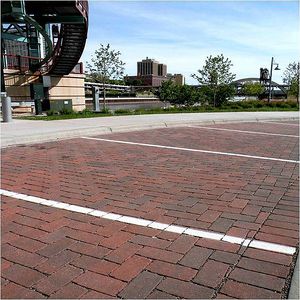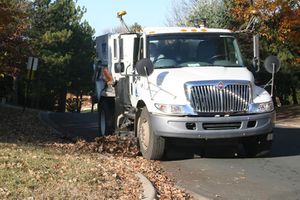
Guidance for meeting dissolved oxygen or oxygen demand TMDL MS4 permit requirements
This page provides information and guidance for MS4 (Municipal Separate Storm Sewer System) permittees who have total maximum daily load (TMDLs) wasteload allocations (WLAs) for dissolved oxygen or oxygen demand.
Contents
Overview
Https://stormwater.pca.state.mn.us/index.php?title=Oxygen demand
Total Maximum Daily Loads (TMDLs) with BOD or COD wasteload allocations
Currently there are three approved total maximum daily load (TMDLs) - for Hardwood Creek (Waterbody ID: 07010206-596), Trott Brook (Waterbody ID: 07010207-680), and Buffalo Creek (Waterbody ID: 07010205-638 (formerly 07010205-501)) - that include MS4 (Municipal Separate Storm Sewer System) wasteload allocations (WLAs) for oxygen demand that are not assigned a zero percent reduction. Hardwood Creek is impaired for aquatic life (fish) due to low dissolved oxygen and Trott Brook and Buffalo Creek are impaired for aquatic life (fish and aquatic macroinvertebrates) due to low dissolved oxygen.
MS4s with applicable dissolved oxygen/oxygen demand WLAs
Link to this table
| TMDL Project | MS4 with a WLA for oxygen demand |
|---|---|
| Hardwood Creek Impaired Biota and Dissolved Oxygen TMDL | Anoka County |
| Hugo City | |
| Lino Lakes City | |
| MNDOT Metro District | |
| Rice Creek Watershed District | |
| Washington County | |
| Trott Brook (Rum River Watershed TMDL) | Elk River City |
| Nowthen City | |
| Ramsey City | |
| Saint Francis City | |
| Sherburne County | |
| Buffalo Creek (South Fork Crow River Watershed TMDL) | Glencoe City |
MS4 permit requirement (Permit/Application Section 22.2)
A compliance schedule is a a schedule of compliance leading to compliance with Clean Water Act regulations. Compliance schedules must meet the following.
|
Sections 22.2 and 12.8 of the MS4 permit provides the requirements for permittees who have a TMDL WLA for dissolved oxygen or oxygen demand.
Section 22.2: If the permittee has an applicable WLA for dissolved oxygen or oxygen demand, nitrate, TSS, and TP, the permittee must provide a summary of the permittee's progress toward achieving applicable WLAs for dissolved oxygen or oxygen demand, nitrate, TSS, and TP with the annual report required in item 25.3. The summary must include the following information:
a. a list of all BMPs applied towards achieving applicable WLAs for dissolved oxygen or oxygen demand, nitrate, TSS, and TP;
b. the implementation status of BMPs included in the compliance schedule at the time of final application submittal.
Section 12.8: The applicant must submit a compliance schedule for each applicable Waste Load Allocation (WLA) not being met for dissolved oxygen or oxygen demand, nitrate, total suspended solids (TSS), and total phosphorus (TP). The applicant may develop a compliance schedule to include multiple WLAs. The applicant's compliance schedule must include the following information:
a. proposed BMPs or progress toward implementation of BMPs to be achieved during the permit term;
b. the year each BMP is expected to be implemented;
c. a target year the applicable WLA(s) will be achieved

The Minnesota Pollution Control Agency (MPCA) recommends including BMPs/activities in your MS4’s compliance schedule that reduce organic matter and carbon (e.g. leaf litter), since these BMPs/activities will also reduce oxygen-demanding substances in the streams (see table below). Most BMPs that reduce organic matter (e.g. street sweeping), will also reduce phosphorus, sediment and/or bacteria (Escherichia (E.) coli, fecal coliform) loading to waterbodies. Additionally, if BMPs/activities are implemented across the entire jurisdictional area of your MS4, some activities may be used to demonstrate progress towards additional applicable phosphorus, total suspended solids (TSS), and/or bacteria (E. coli, fecal coliform) WLAs.
Potential sources of organic matter and carbon and BMPs/Activities that could be included in your compliance schedule to address dissolved oxygen/oxygen demand applicable WLAs
Link to this table
| General Category | Source | BMP/Activity |
|---|---|---|
| MS4 Infrastructure | Decaying plant matter, litter, and sediment in the storm drain system | Enhance street sweeping program |
| Remove leaf litter and soil in street and gutters (e.g. implement an Adopt-a-storm drain program). Educate property owners on proper yard waste management | ||
| Stormwater runoff from impervious surfaces | Implement source, rate, volume controls (i.e. adopt minimal impact design standards (MIDS) for new, redevelopment, and linear projects) | |
| Minimize impervious surfaces | ||
| Implement filtration practices, infiltration practices, and sedimentation practices | ||
| Domestic pets | Dogs, cats, dog parks, walking trails, residential yard and sidewalk runoff (spring runoff after winter accumulation) | Install pet waste disposal stations along trails, in dog parks, etc |
| Pass and enforce pet waste ordinances and educate pet owners about them | ||
| Add infiltration BMPs downstream of parks/residential areas and upstream of stormwater pipes (i.e., somewhere between the park/residential area and the stormwater outfall to intercept and infiltrate some or all of the flow from these areas) | ||
| Residential sources | See this section | |
| Industrial and commercial practices | See this section | |
Additional information
Additional information on potential BMPs/activities to address the Hardwood Creek, Trott Brook Creek, and Buffalo Creek dissolved oxygen impairments may also be available in the following:
Hardwood Creek TMDL
- TMDL Report
- TMDL Implementation Plan
- Rice Creek Watershed District Comprehensive Watershed Management Plan
Rum River Watershed TMDL
South Fork Crow River Watershed TMDL
Related Pages
Additional information and guidance related to TMDLs may be found at this link.

